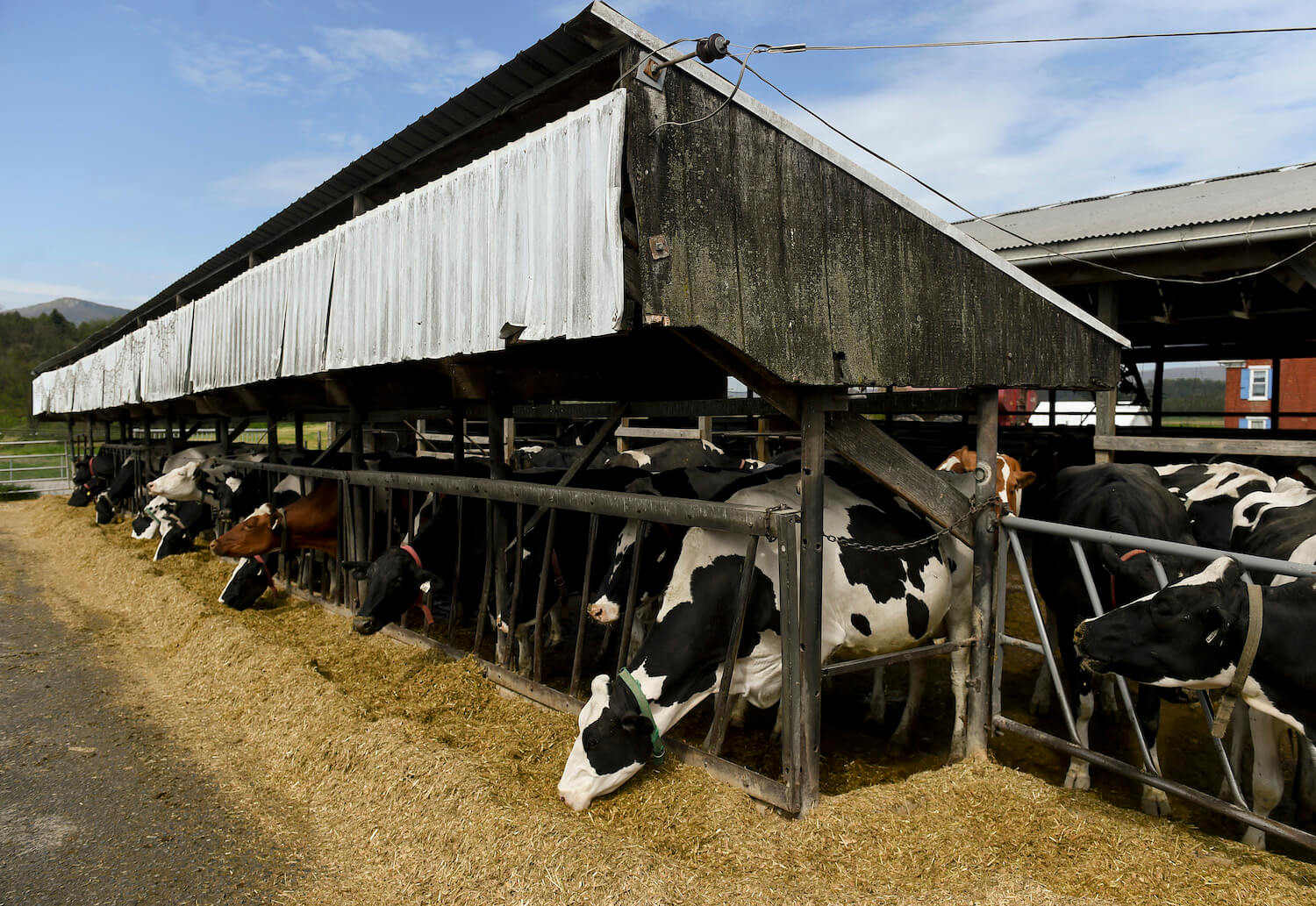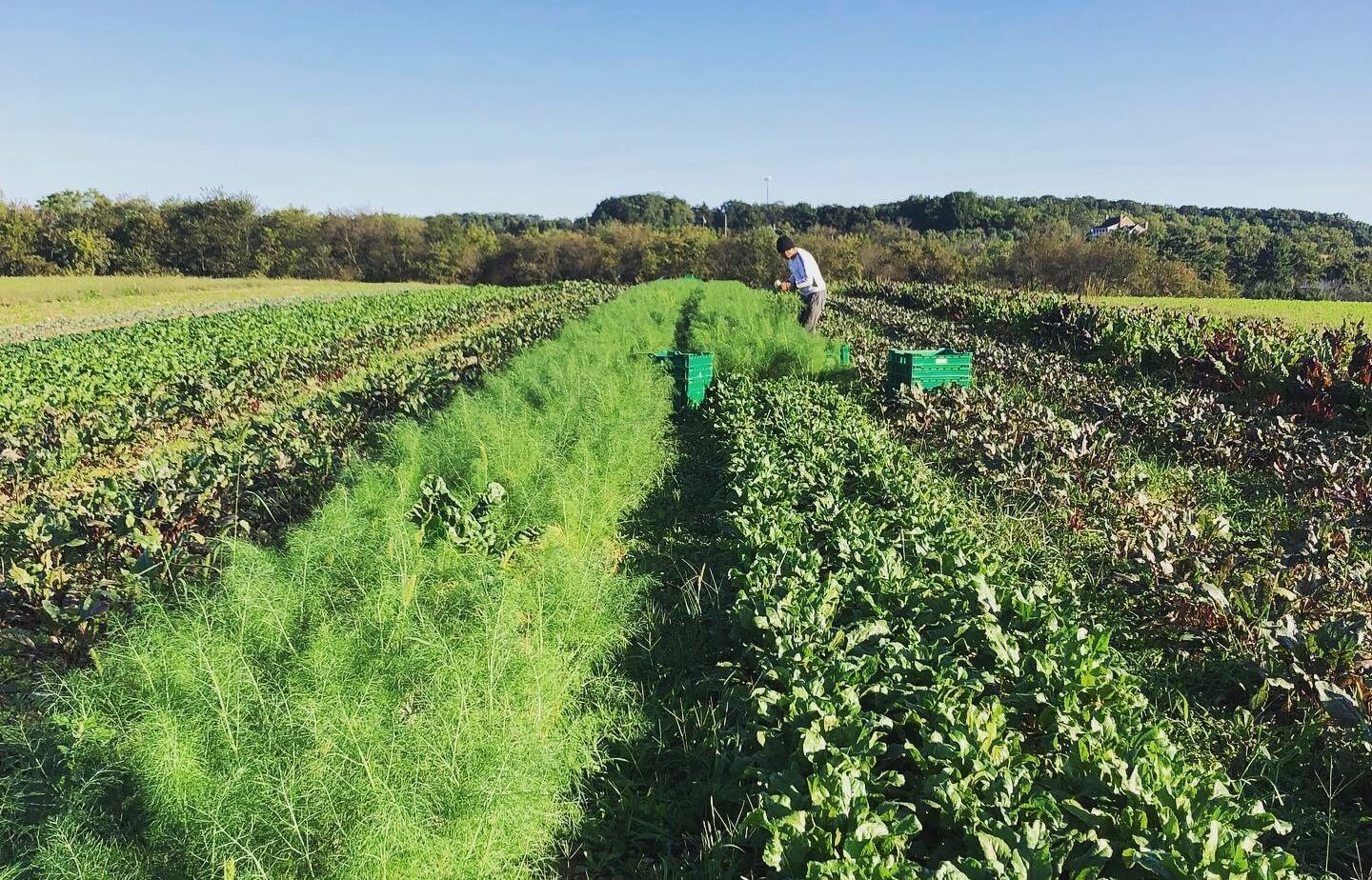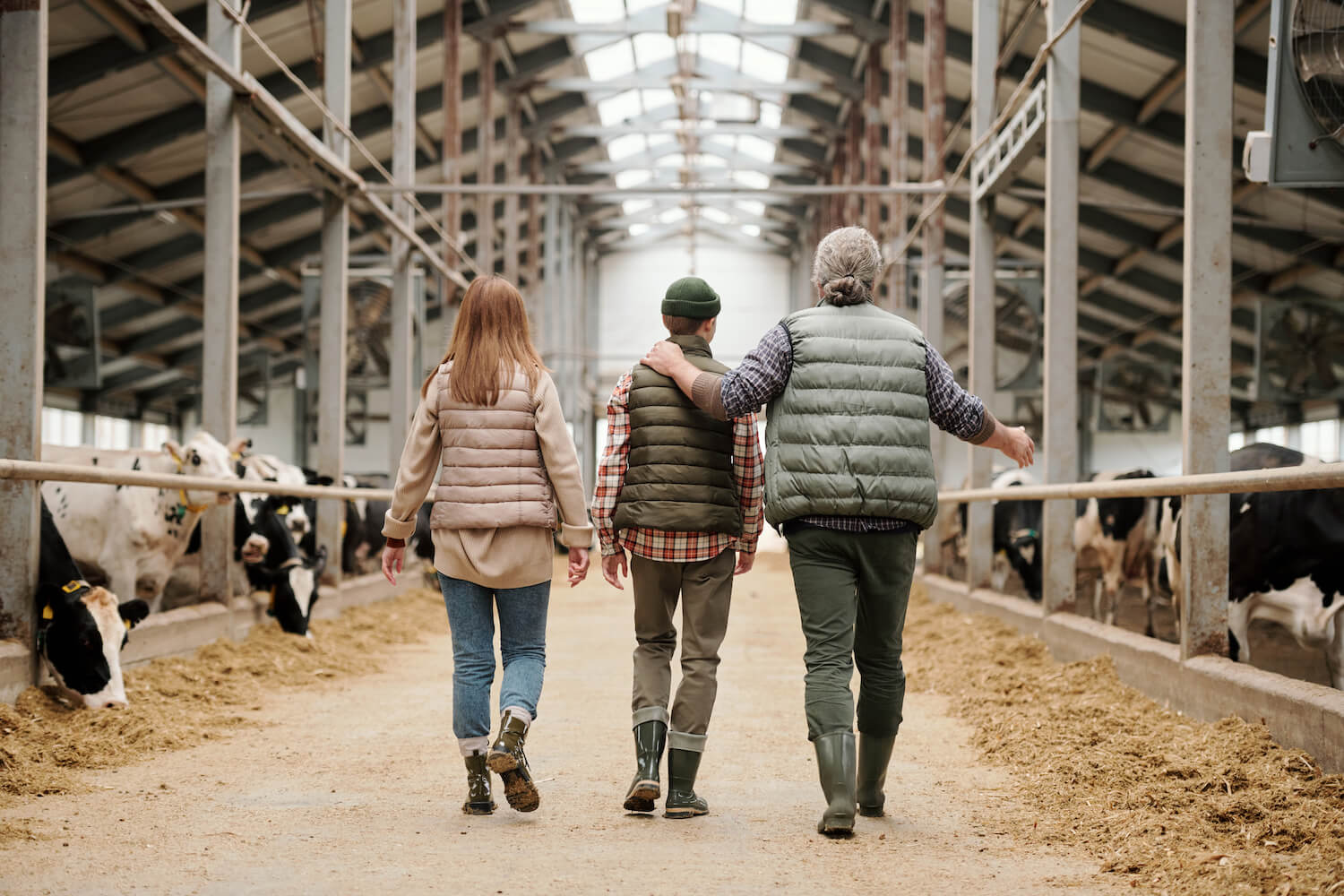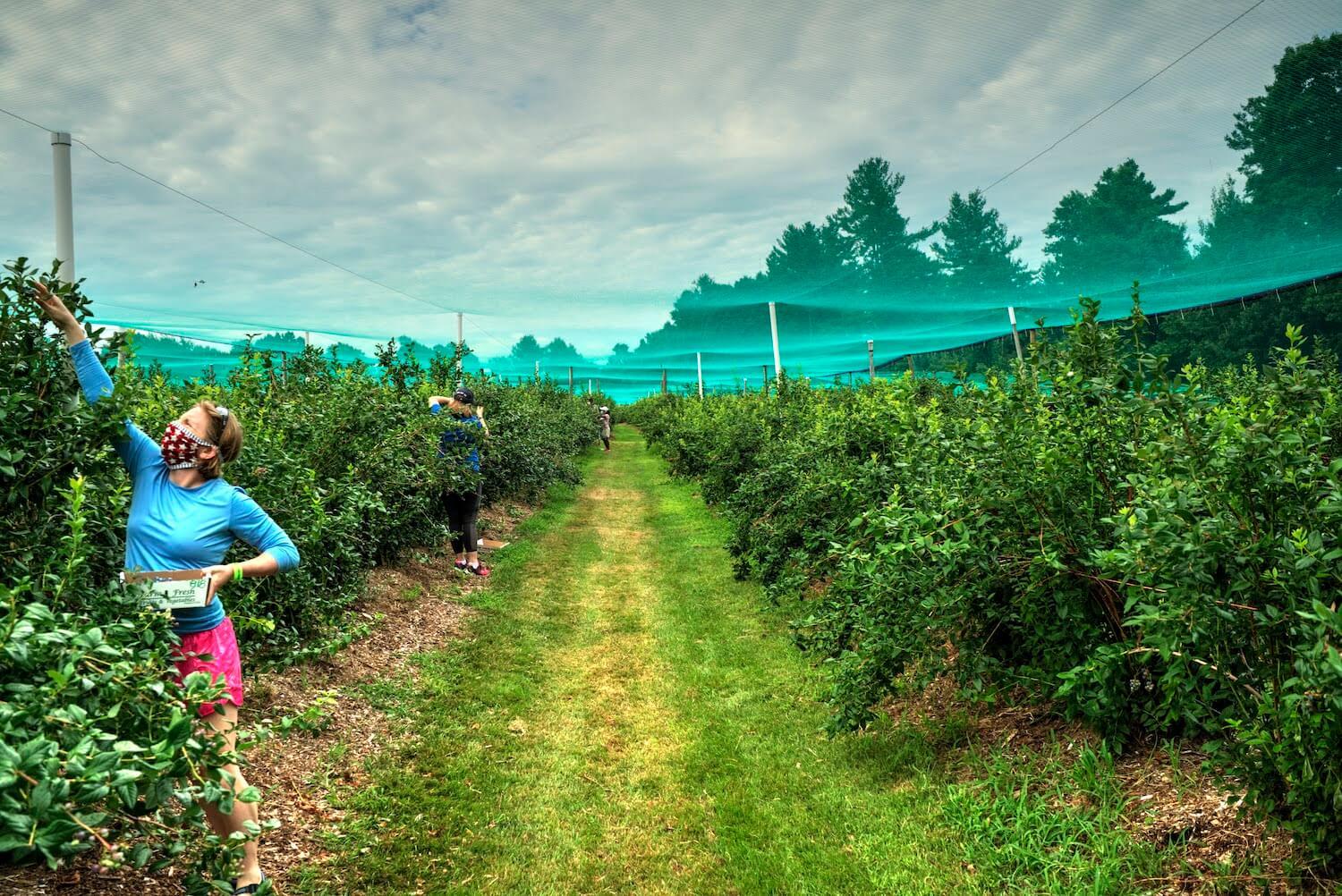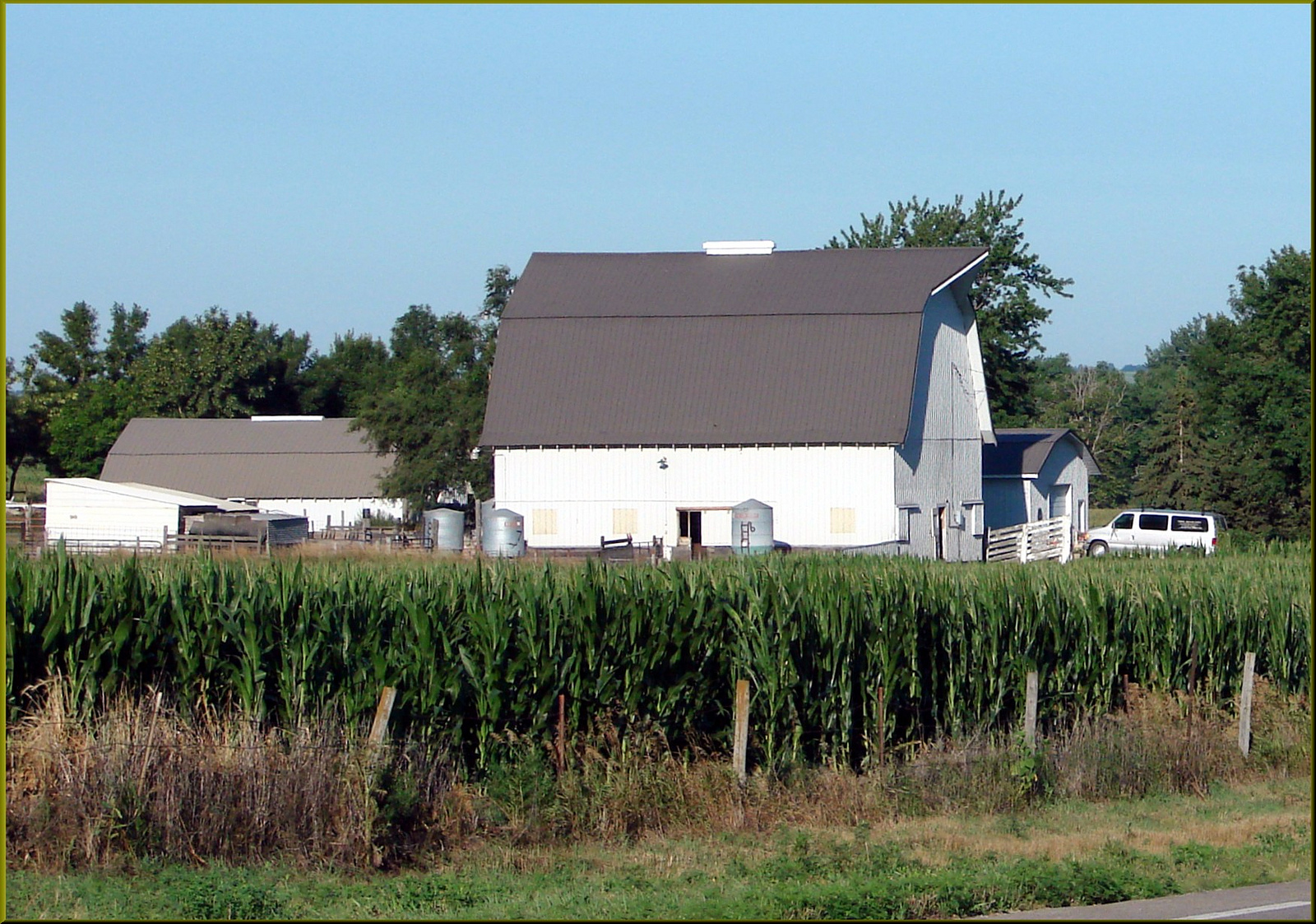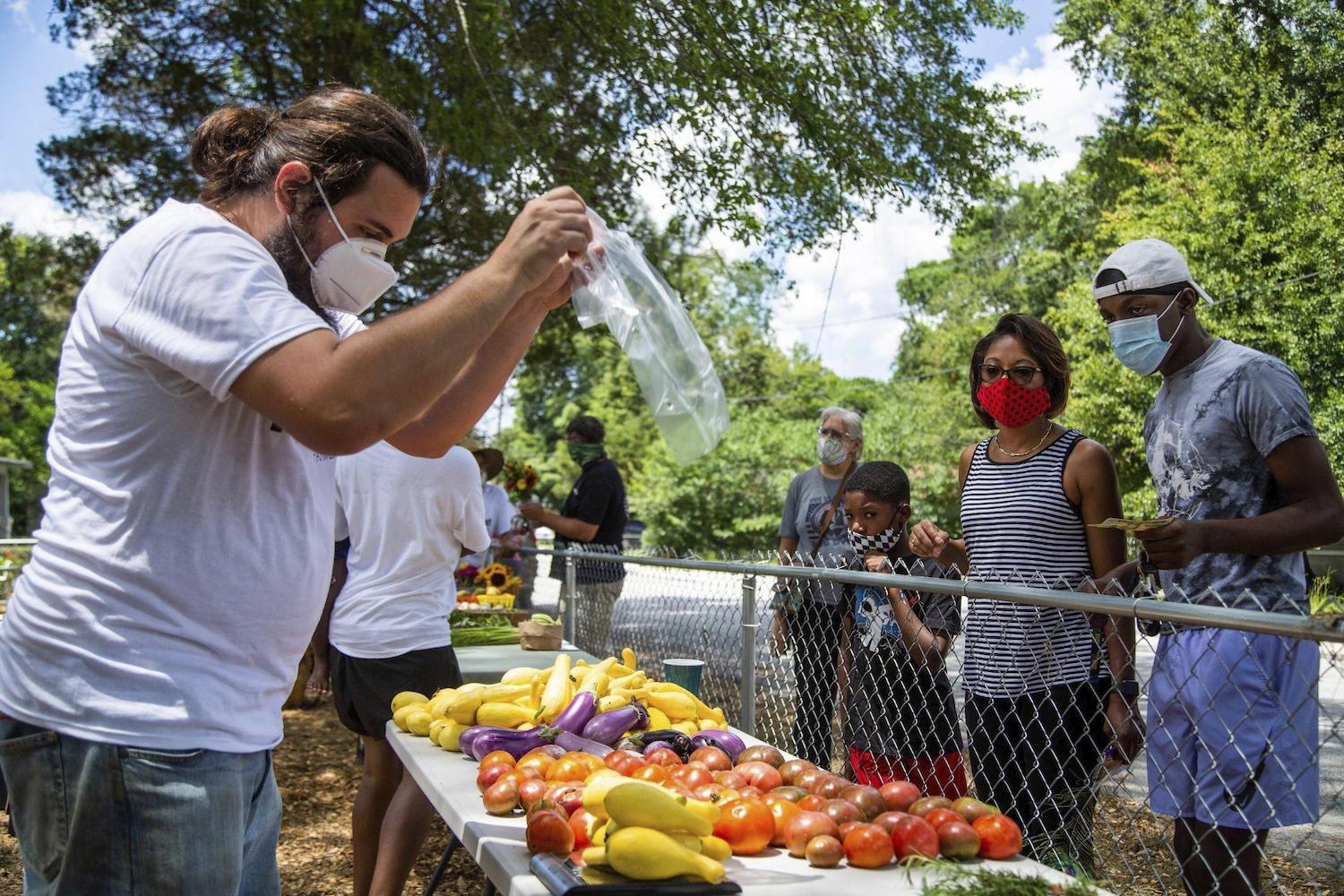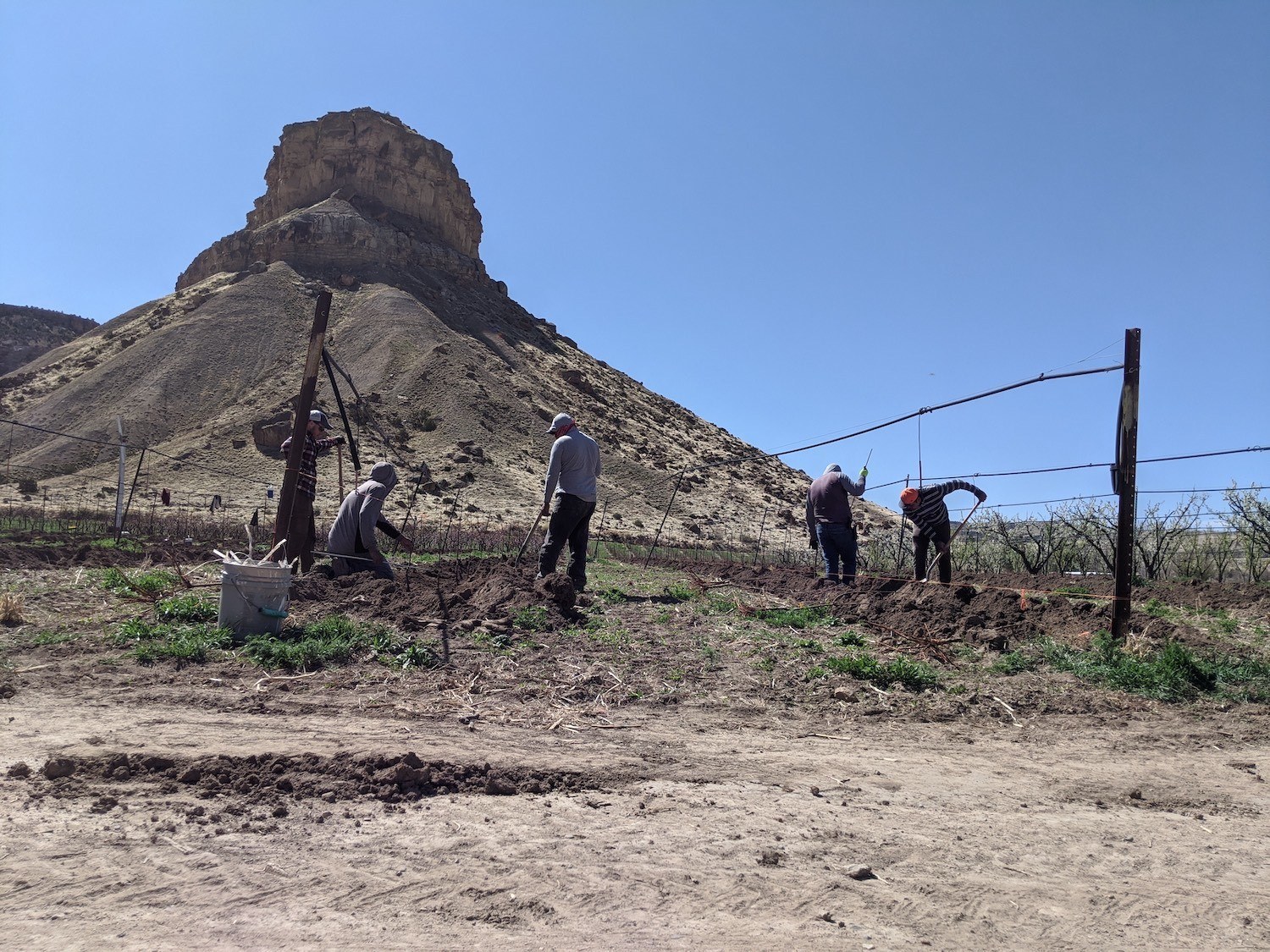
Gwen Cameron/Rancho Durazno
As demand soars for “storage crops” like onions, carrots, and potatoes, farmers give up chasing trends, experimenting with new varieties, and wooing high-end chefs with something unique.
When the pandemic hit last March and sent food supply chains into a tailspin, many American farmers found themselves peering into a chasm of unknowns. Who would buy microgreens intended for now-shuttered hotels, or milk meant to fill small cartons for newly empty school cafeterias? Would they have to plow under surplus potatoes? Was it possible to pivot berry harvests from restaurants to CSA sales? And should they—or could they—adjust their crop plans?
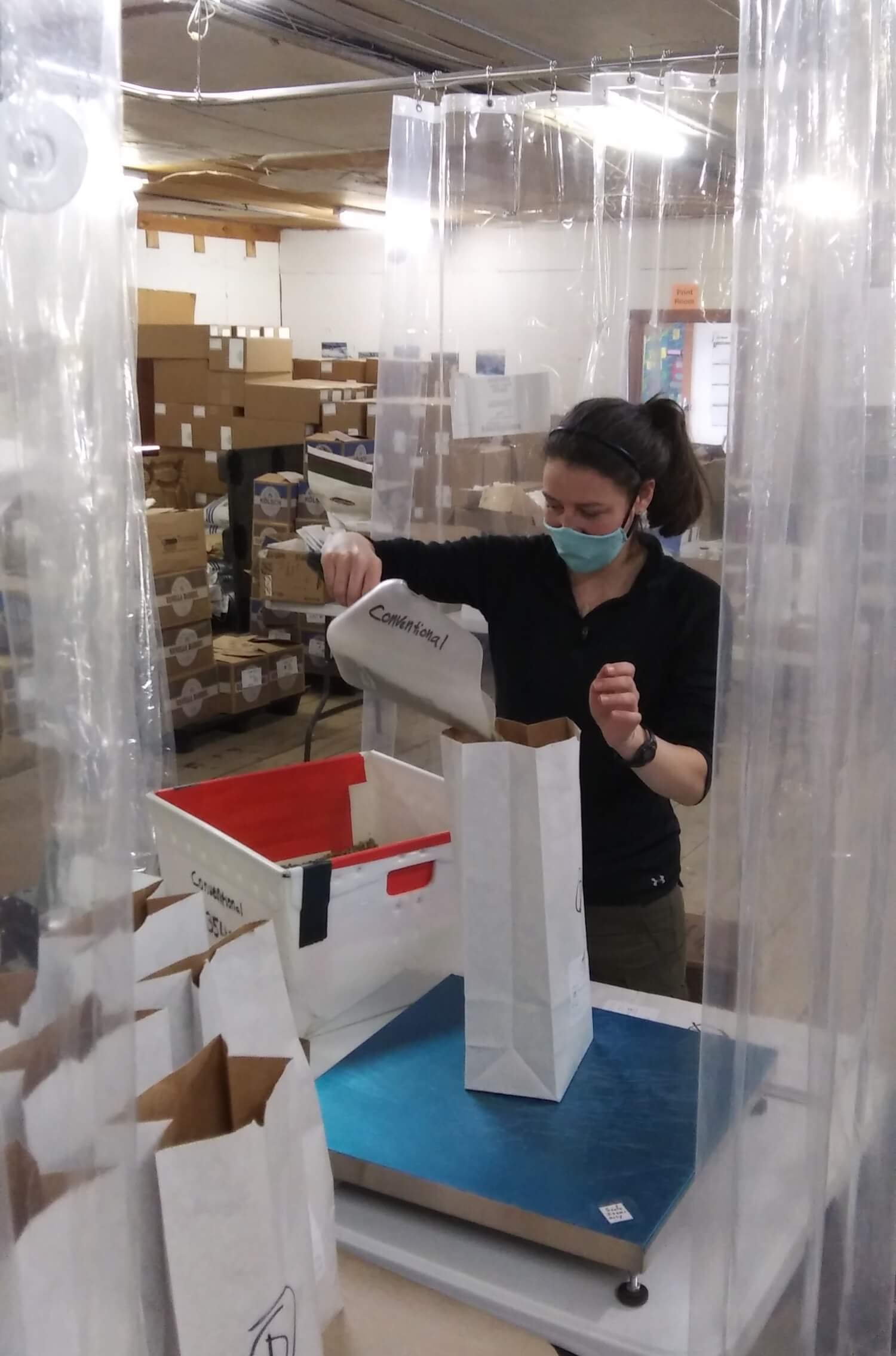
Heron Breen
Becca Happnie-Yoder, an employee at Fedco Seeds, packs seed orders.
A year later, schools and various food-centric businesses are beginning to reopen. But aside from a bullish commodity crop market—Ag Farmer reports that corn and soy farmers plan a 4.8 percent increase in acreage over last year, to 182.3 million acres—some farmers are unable to fiddle with production. Still others feel tentative about what the market holds in store, which affects what they’re thinking of planting.
“Farmers are in a challenging spot,” said Heron Breen, research and development coordinator for Fedco Seeds in Waterville, Maine, about 30 percent of whose business comes from small and medium-size regional farms in the one-to-20-acre range. “Do they make the bet that they’ll start seeing sales from restaurants and hotels in the greater Boston and Portland areas? That could dry up if things go in reverse, so people are cautious.”
That caution has manifested in a couple of ways. For starters, farmers have “used a sharp pencil to reboot their farm plan,” and are planting fewer crops they know they can sell. “No one is trying to wow a high-end chef with something unique this year,” said Breen. Additionally, many farmers have been buying seed out of season. “Peoples’ livelihoods depend on getting the varieties they rely upon for performance, disease resistance, or flavor, and we saw a huge amount of orders over the summer out of cycle; we can’t guarantee germination six months later but [farmers] were willing to take the risk to make sure they had Sungold tomato seed,” for example. The result of this doubly conservative tactic, said Breen, might have “farmers breathing a sigh of relief at the end of summer, if they manage to sell everything they’ve got.”
[Subscribe to our 2x-weekly newsletter and never miss a story.]
In Royal Oaks, California, JSM Organics owner Javier Zamora is one such playing-it-safe farmer. On his 80 acres devoted to berries, mixed vegetables, and flowers, “I’m definitely not experimenting—I’m going back to basics,” he said, still apprehensive after last year’s supply chain hiccups forced him to give away strawberries or sell them for 10 cents (versus $3 dollars) per pound.
For Zamora, “basic” means not trying any new raspberry varietals this year and sticking with only five or six varieties of cherry tomatoes that “make a good medley.” He’ll put in more staples like green beans and squashes, and cut back on the jicama-on-the-vine that he usually provides to 350 local public-school classrooms, as educational material—he’s got no jicama contracts for 2021-22.
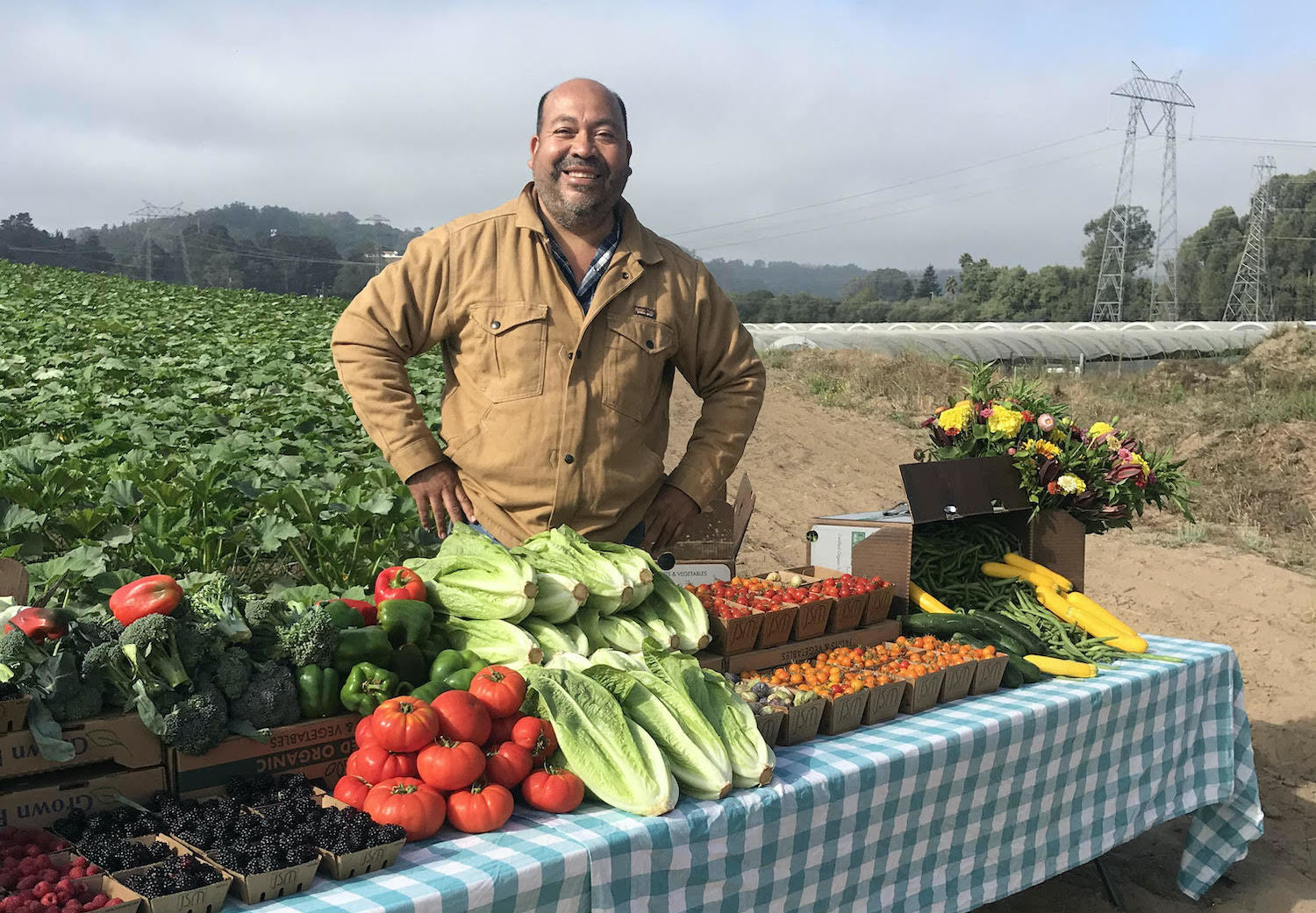
Javier Zamora, owner of JSM Organics in California, said he’s playing it safe and not experimenting with any new varietals this year.
Javier Zamora
Where Zamora does plan on being a little less conservative is with strawberries. “Finally, [seed breeders at] UC Davis are coming out with three new varieties for small growers. They called me and said ‘…if you’re interested.’ Of course, I’m interested, I’ve been waiting! If I weren’t diversified, not only in my customer portfolio but also in the crops I grow, I would have lost my brown ass a long time ago,” Zamora said.
When it began, the pandemic had an outsize effect on the already struggling dairy industry, where production pivots don’t happen quickly. With schools closed, it was fluid milk processors who had to figure out how to switch packaging from small cartons to half- and whole gallons for the retail market, said Patty Edburg, a Wisconsin dairy producer who’s also vice president of the National Farmers Union. Until that got sorted, farmers were forced to dump a lot of milk. “But then it all came back into scale,” Edburg said. “Not a lot has changed since then.”
Stone fruit production is similarly impossible to modify in short order. “There are only so many things you can change,” said Gwen Cameron, who raises peaches, apricots, plums, cherries, and nectarines at Rancho Durazno in Palisade, Colorado. “You can’t just rip out trees or put in new ones to get more of a crop that year.” For Colorado’s fruit growers, the early weeks of the pandemic coincided with a massive frost in April—followed by another in October—that killed off many young trees and led to what Cameron calls an “extreme shortage” of fruit in the state. She lost 35 percent of her peach crop and nearly all of the trees she’s planted in the last three years. On the plus side, that was offset by the 35 percent more trees she’d recently put in to increase production … eventually.
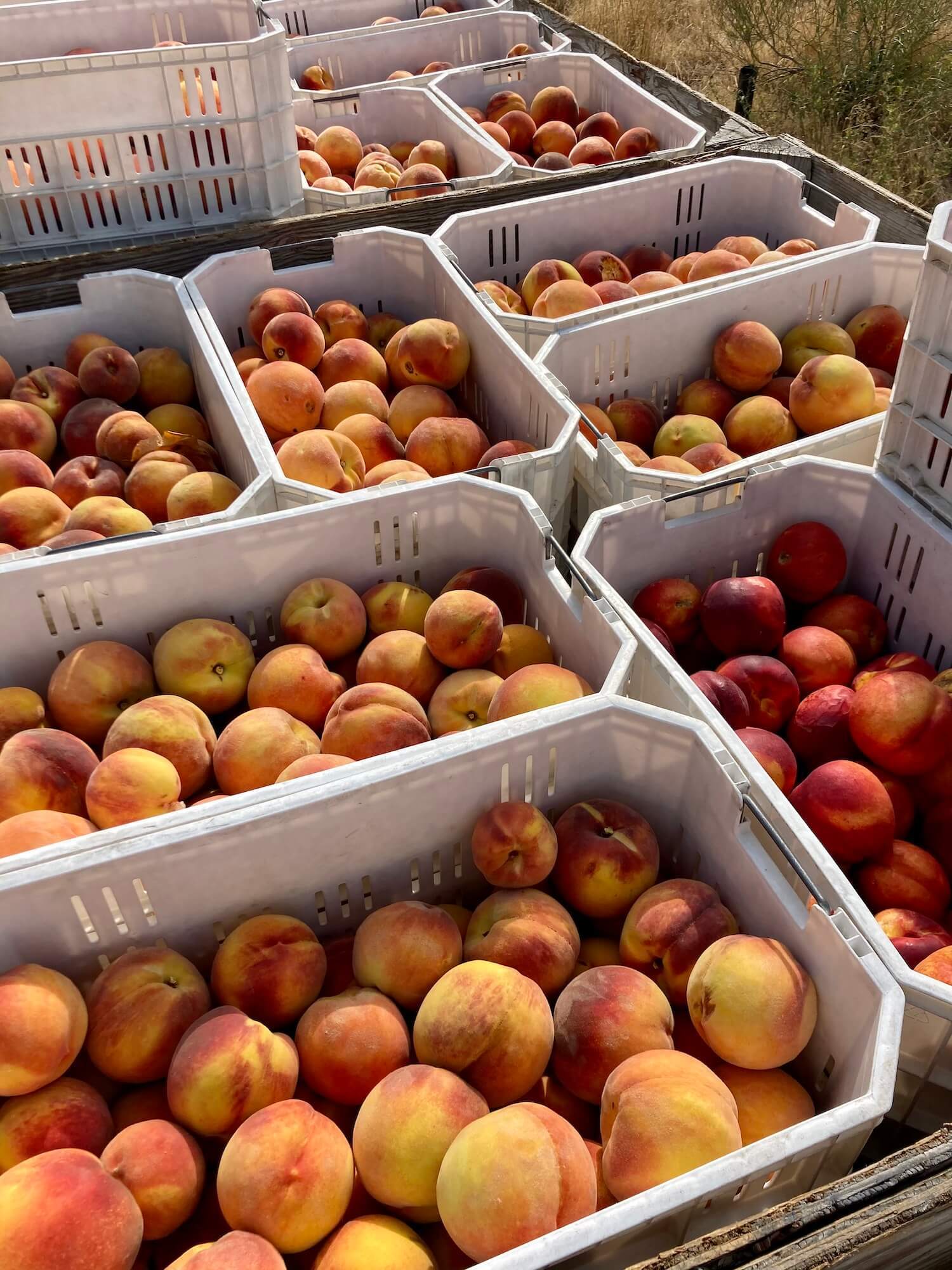
Gwen Cameron/Rancho Durazno
For Colorado’s fruit growers, frost in April and October of 2020 killed off many young trees, creating a hole that’ll affect production for years.
It takes four years to get a full crop from a new tree, so that means Cameron is facing a hole in production in a couple of years. “But there’s not a lot to change right now to deal with that,” she said. Federal aid through the Tree Assistance Program will help defray the cost of replanting. Meanwhile, if she can get through this growing season without further calamity, she’ll continue to sell fruit from her remaining trees to local CSAs and at farmers’ markets, where she said pandemic-driven sales continue to be strong.
In Cameron’s Western Slope region of the state, charitable food distribution has increased by 54 percent since the beginning of the pandemic. To meet need there and elsewhere, the state created the Food Pantry Assistance Grant, which will pay local farmers to supply pantries with produce through June of 2022. Through this program, Kaye Davis, operations manager for Early Morning Orchard, also in Palisade, said she’s been able to significantly expand farm production to supply five different pantry locations, which serve as many as 850, mostly Latino, families weekly. (Early Morning also works as an aggregator, picking up produce for the pantries from another 13 farms, all of which struggled to stay afloat with food businesses closed.)
Over the last year, Early Morning has expanded from one-and-a-half acres of vegetables and 10 acres of fruit, to six acres of veg and 15 acres of fruit—adding raspberries, blackberries, and rhubarb in order to give food pantries that struggle to afford those kinds of produce a consistent supply. In order to meet pantry requests for “culturally identifiable produce,” the farm has done away with “boutique” restaurant crops like edible flowers and Carolina reaper chiles in order to amp up production of green hot peppers, winter squashes and pumpkins, green- and red-leaf lettuces, and cherry tomatoes. “It’s your basic-type stuff that if someone gets it in their produce box, they understand what they can do with it,” said Davis.
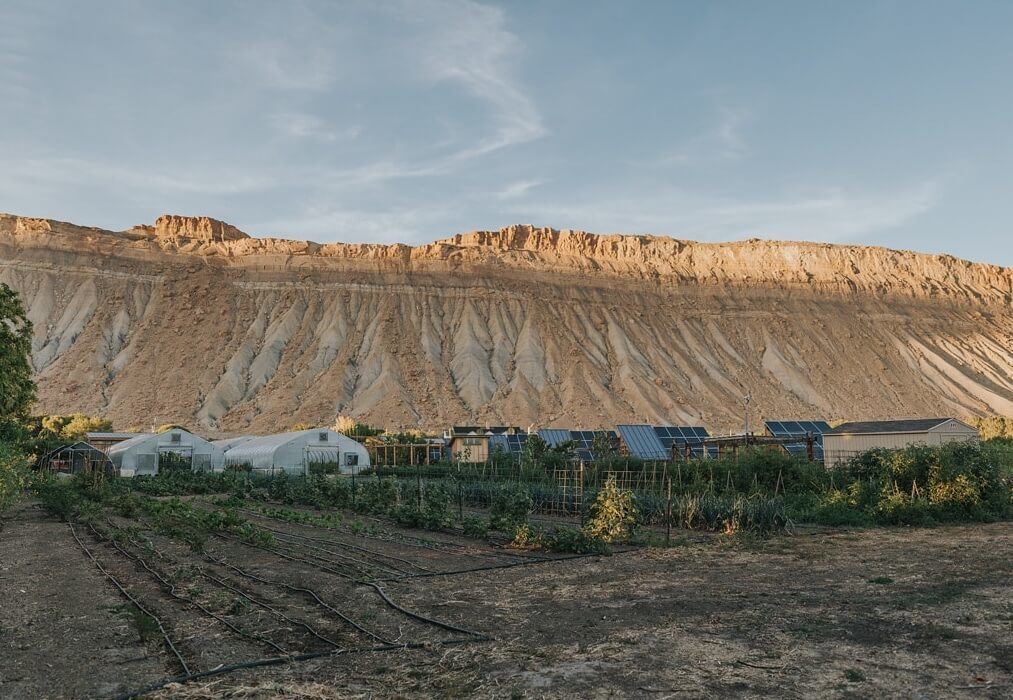
Early Morning Orchard significantly expanded production to supply local food pantry locations, which serve many Latino families.
Early Morning Orchard
Learning a lesson from the winter, when storage crops like carrots, potatoes, and onions were in high demand but scant supply, Early Morning recently put in 50 100-foot rows of each, which it’ll be able to grow and harvest throughout the year thanks to its nine greenhouses—five of which were added in the last 18 months. “This is a radical shift for us,” said Davis. “We’re growing what our clientele wants and we’ve stopped following trends. The food pantries have given direction and purpose to the work that we do.”
It’s been a mutually beneficial relationship. Thanks to food pantry contracts, Davis was able to keep her full-time staff employed through the winter, expand the farm, and to feel secure in the knowledge that there would be an automatic market for the farm’s output. “We’re providing food as a way to help end hunger,” said Davis, “but we also know, this isn’t going to go to waste.”


